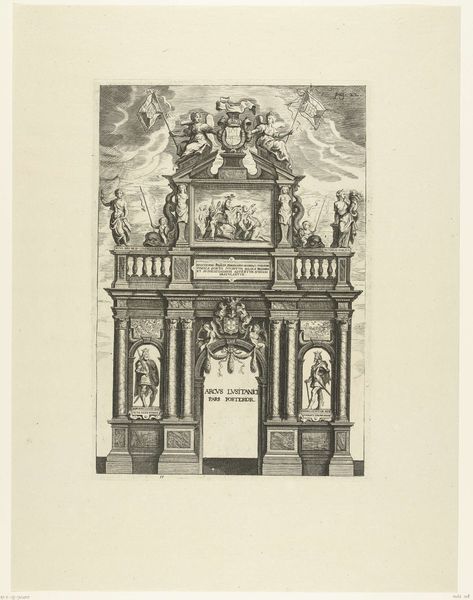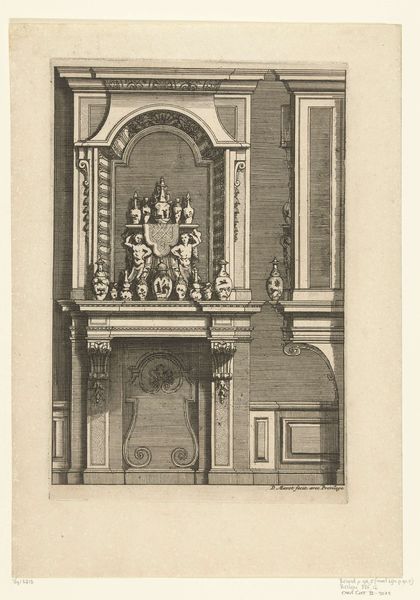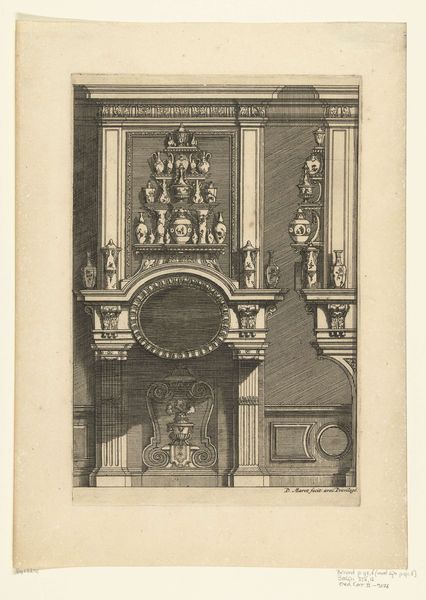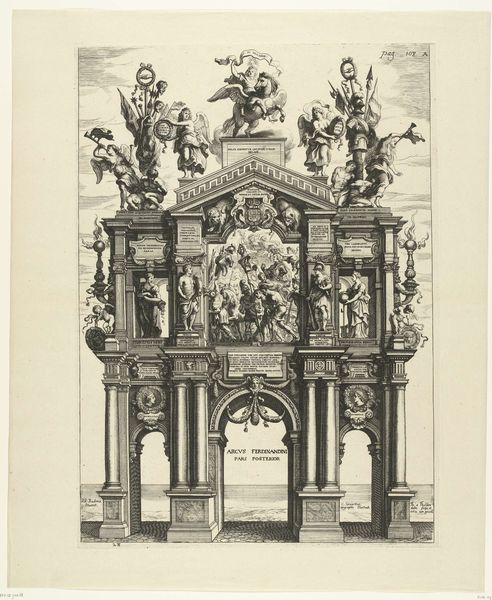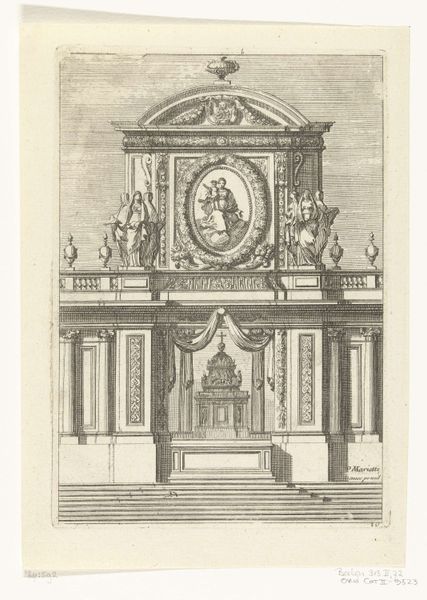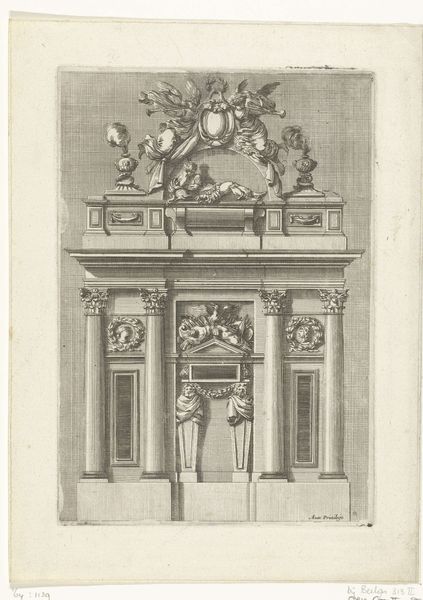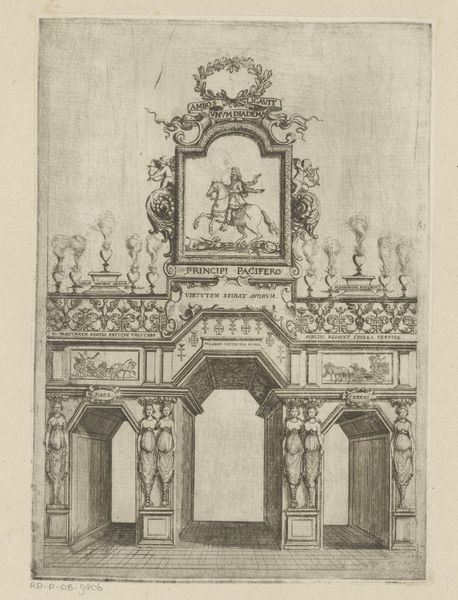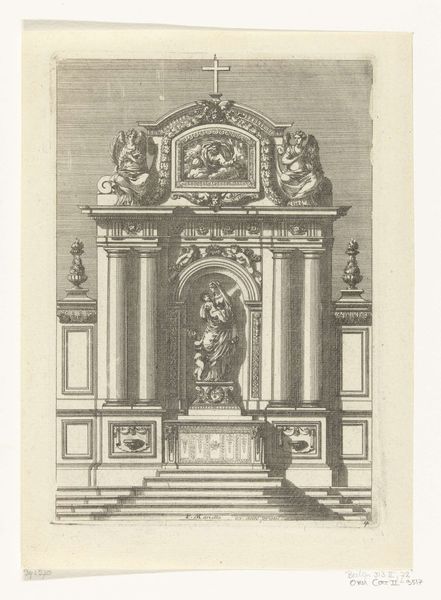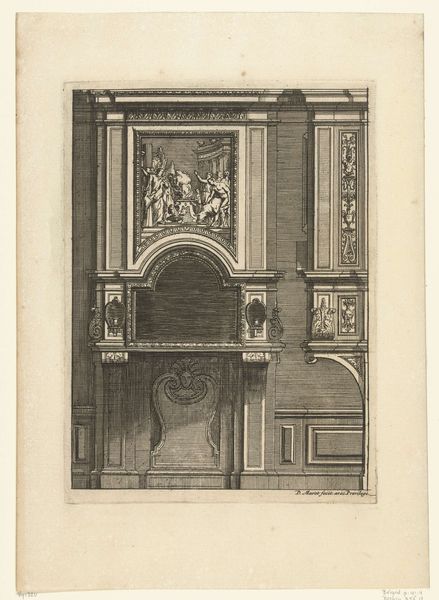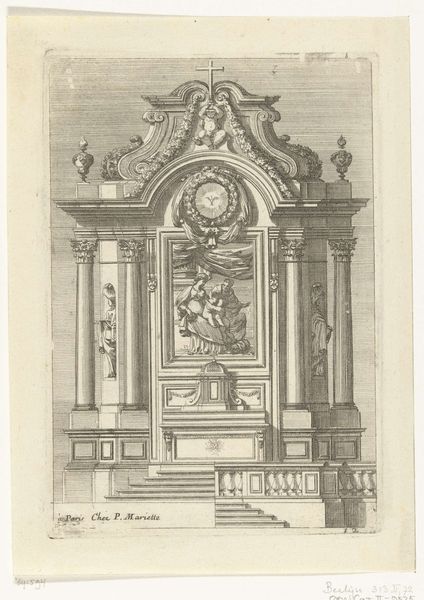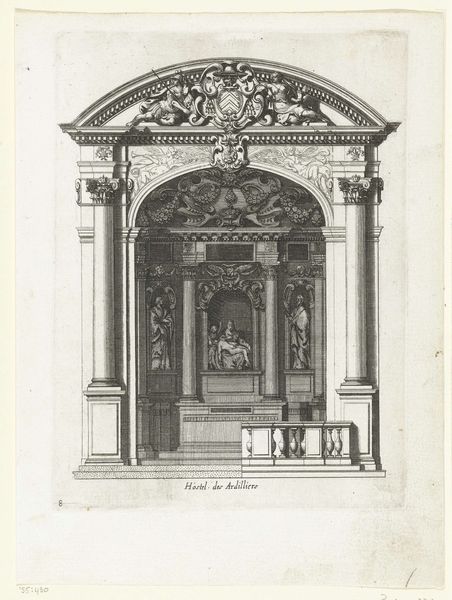
De Portugese triomfboog (voorzijde); intocht van Ferdinand te Antwerpen in 1635 (nr. 10) 1639 - 1641
0:00
0:00
print, metal, engraving, architecture
#
allegory
#
baroque
# print
#
metal
#
form
#
line
#
history-painting
#
engraving
#
architecture
Dimensions: height 415 mm, width 290 mm
Copyright: Rijks Museum: Open Domain
Editor: So, this is "The Portuguese Triumphal Arch (front side); Entry of Ferdinand into Antwerp in 1635," made between 1639 and 1641 by Theodoor van Thulden. It's an engraving, full of incredible detail! It feels so grand and imposing, but what jumps out to you? Curator: Well, immediately, the allegorical figures draw my attention. Note the angels and other figures adorning the arch. In triumphal arches, these are more than decoration; they're carefully chosen symbols meant to communicate power, legitimacy, and divine favor. What meanings can we discern here, do you think? Editor: Hmm, the angels holding flags, the figures flanking the central arch… I guess they all represent different virtues or regions that Ferdinand controlled? Maybe even blessings on his rule? Curator: Precisely! Think of triumphal arches in the context of cultural memory. They aren't just records of an event; they're active tools shaping public perception. Van Thulden is presenting Ferdinand's entry not just as a historical fact, but as a moment of orchestrated triumph, using these familiar allegorical figures to root this moment into a larger, mythic narrative. What effect do you think it had? Editor: It sounds like this arch served as propaganda, aiming to make the population more inclined to support Ferdinand and his reign. Were there other triumphal arches at the time? Curator: Absolutely. This was a common practice during the Baroque period, used by rulers to cement their power and project a certain image. They understood the potent language of symbols and architecture. Now, look closer at the inscription; what do you read? Editor: The inscription helps tie the symbolic representation with the narrative of Ferdinand's entrance into the city, giving us some idea about who would read the scene this way. I see now that everything here works together to convey the power of the state. Curator: Exactly. This print is fascinating in how it consolidates Ferdinand's authority, embedding it deeply within the visual and cultural memory. Editor: I'll definitely be considering the power of symbolic representation in my own work from now on!
Comments
No comments
Be the first to comment and join the conversation on the ultimate creative platform.
